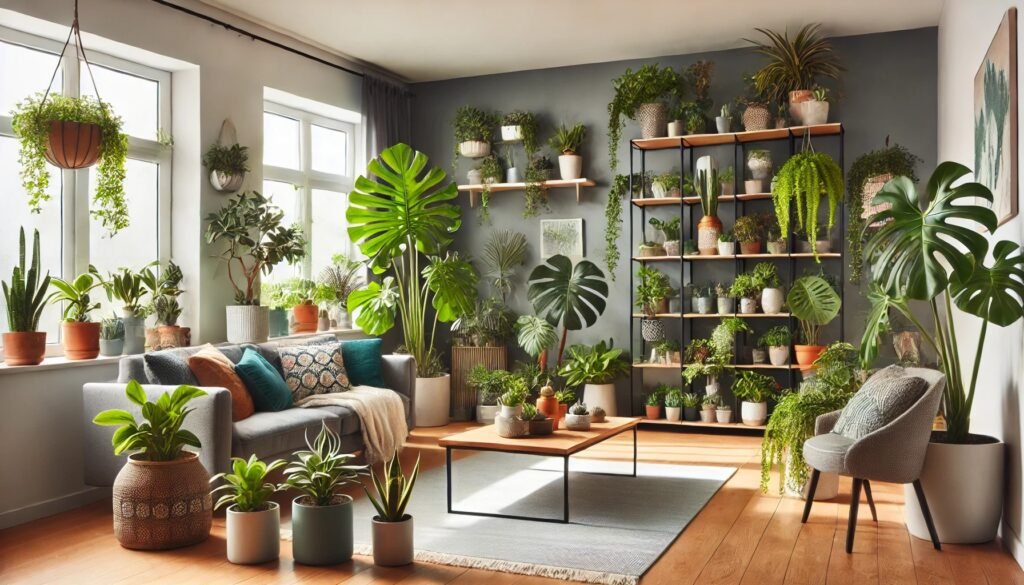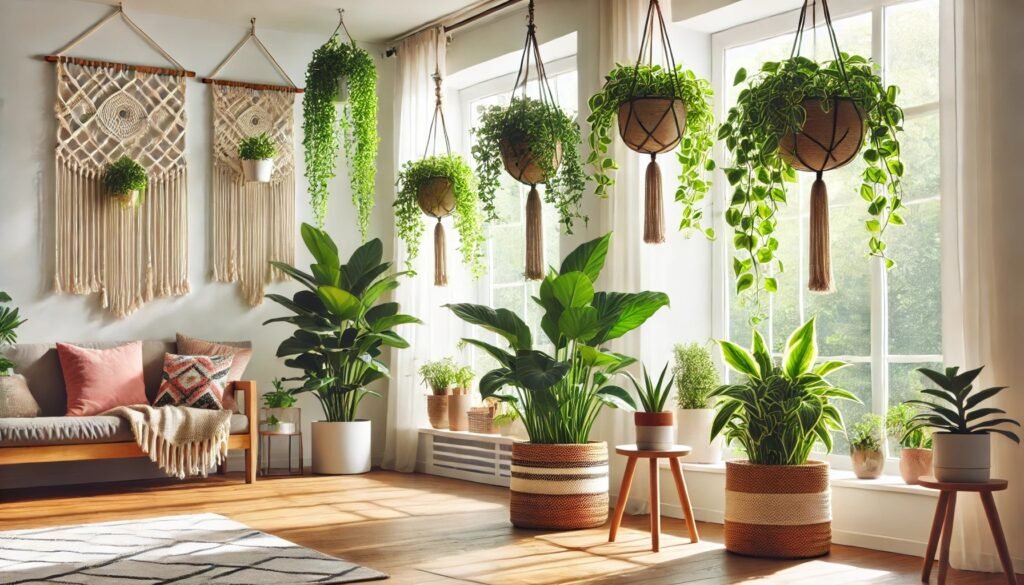
Starting a plant journey can be both exciting and a bit overwhelming, especially when trying to understand what your green friends need to thrive. For beginners, the key to plant health boils down to three fundamental requirements: light, water, and soil. Let’s break down these essentials in an easy-to-understand manner, so you can create a thriving garden in the Northern Hemisphere.
The Importance of Light
Light is a vital component for plant health, as it’s the primary source of energy for photosynthesis – the process through which plants convert light into the food they need to grow. Understanding the light requirements of your plants is crucial to ensuring they flourish.
Types of Light
Plants generally fall into three categories based on their light needs: full sun, partial sun, and low light.
- Full Sun Plants: These plants require at least six hours of direct sunlight each day. They thrive in bright, sunny spots such as south-facing windows or outdoor areas with unobstructed sunlight. Examples include succulents, cacti, and most herbs.
- Partial Sun Plants: These plants do well with about three to six hours of direct sunlight daily, often preferring morning sun and some shade in the afternoon. East or west-facing windows are ideal. Popular partial sun plants include ferns, begonias, and spider plants.
- Low Light Plants: Low light doesn’t mean no light. These plants can thrive with indirect or filtered light, making them perfect for north-facing windows or shaded corners. Snake plants, pothos, and peace lilies are great examples.
Light Intensity and Duration
While natural sunlight is the best light source, it’s not always possible to provide ideal conditions indoors. Here’s where artificial grow lights come in handy. LED grow lights are energy-efficient and can mimic the natural light spectrum, ensuring your plants get the light they need. Position these lights about 12-18 inches above your plants and keep them on for about 12-16 hours a day, depending on the plant type.
Mastering Watering Techniques
Watering might seem straightforward, but it’s an area where many beginners go wrong. Overwatering or underwatering can both harm your plants. Understanding how much and how often to water is crucial for plant health.
How Much to Water
The amount of water a plant needs depends on its type, size, and the environment it’s in. Here are some general guidelines:
- Succulents and Cacti: These plants store water in their leaves and stems, so they require infrequent watering. Allow the soil to dry out completely between waterings.
- Tropical Plants: Plants like ferns and peace lilies thrive in consistently moist soil. Water them when the top inch of soil feels dry.
- Flowering Plants: These typically need regular watering to support their blooms. Keep the soil evenly moist but not waterlogged.
When to Water
The best time to water your plants is in the morning. This allows any excess moisture to evaporate during the day, reducing the risk of fungal growth. To check if your plant needs water, insert your finger about an inch into the soil. If it feels dry, it’s time to water.
Watering Techniques
- Bottom Watering: This technique involves placing the pot in a tray of water and allowing the plant to absorb moisture from the bottom up. It’s effective for plants that are prone to root rot.
- Top Watering: Pour water directly onto the soil surface until it drains out from the bottom. This is suitable for most plants but ensure the pot has drainage holes.
Understanding Soil Types
Soil is more than just dirt; it’s a complex medium that provides essential nutrients, supports plant structure, and aids in water retention and drainage. Knowing the right soil type for your plants is vital for their growth.
Types of Soil
- Potting Mix: Ideal for container plants, potting mix is lightweight and designed for good drainage. It’s often enriched with nutrients to support plant growth.
- Garden Soil: This is a heavier soil that is used for outdoor gardening. It’s rich in organic matter but can be too dense for potted plants.
- Cactus and Succulent Mix: This mix has excellent drainage properties, preventing water from sitting around the roots, which is crucial for succulents and cacti.
- Orchid Bark: Orchids require a special mix of large bark pieces that provide aeration and mimic their natural epiphytic growing conditions.
Soil Composition
Good soil has a balance of three main components: sand, silt, and clay. Here’s how each component contributes to soil quality:
- Sand: Provides good drainage and aeration but doesn’t hold nutrients well.
- Silt: Retains moisture and nutrients better than sand but can compact easily.
- Clay: Holds nutrients and moisture well but drains poorly and can become waterlogged.
For most indoor plants, a well-draining potting mix that retains some moisture without becoming soggy is ideal. You can also amend your soil with perlite or vermiculite to improve aeration and drainage.
Nutrient Needs
Plants also need nutrients to thrive. Most potting soils come pre-fertilized, but over time, these nutrients are depleted. Fertilizing your plants during the growing season (spring and summer) provides them with the necessary nutrients. Use a balanced, water-soluble fertilizer and follow the instructions on the package.
Maintaining Healthy Plants
Now that you understand the fundamentals of light, water, and soil, here are some additional tips to keep your plants healthy and thriving.
- Regular Inspection: Check your plants regularly for signs of pests or disease. Early detection and treatment can prevent serious issues.
- Pruning: Remove dead or yellowing leaves to encourage new growth and prevent disease.
- Repotting: As your plants grow, they may outgrow their pots. Repotting every couple of years provides fresh soil and more space for root growth.
Bringing It All Together
Creating a thriving indoor garden involves understanding and balancing the essential requirements of light, water, and soil. Each plant has unique needs, and observing how your plants respond to their environment will help you adjust care routines accordingly. With a little attention and care, you can enjoy a lush and vibrant indoor garden that brings beauty and tranquility to your home.
Happy gardening!
Stay connected with the world of plants! Subscribe to Phylofy for expert gardening tips, DIY projects, and eco-friendly inspiration. Join our community and nurture your love for nature. Don’t miss exclusive content and updates. Subscribe now!



